 In the lore of Columbia River salmon, the “June Hogs” stand apart as an almost-mystical “supersalmon” that made an epic upstream migration to the headwaters of the Columbia. They seem to be virtually-always described as having been a summer-run chinook.
In the lore of Columbia River salmon, the “June Hogs” stand apart as an almost-mystical “supersalmon” that made an epic upstream migration to the headwaters of the Columbia. They seem to be virtually-always described as having been a summer-run chinook.
“Top Photo: This “June Hog” photograph was taken at the Union Fisherman’s Dock in Astoria, Oregon in about 1910. The chinook on the left was stated to have weighed 116 pounds and the one on the right 121 pounds. “
These renowned fish apparently got that nickname from a combination of their individual size, the sheer abundance of their numbers, and a hog-like fatness.
When you start digging into the “June Hogs” past, you quickly discover that any information you gather is pretty murky and often conflicting.
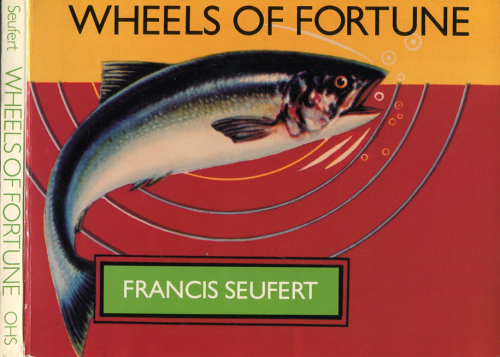
Photo: This is a 1980 book published by the Oregon Historical Society. It’s now out-of-print, but you can still find used copies pretty readily.
The Seufert Brothers Cannery near The Dalles operated multiple fish wheels, and they sited them the furthest up the Columbia of any of the fish wheels.
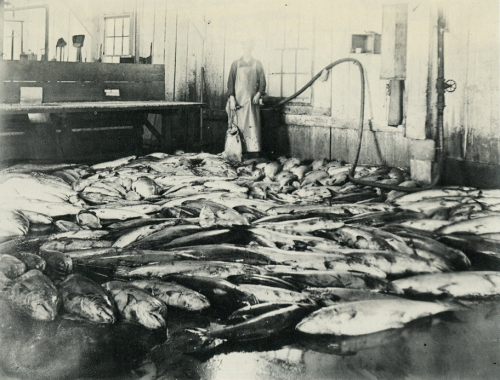
In the caption for this (above) 1901 photograph taken inside the Seufert Brothers Cannery, Francis Seufert alluded to these fish as having been “June Hogs” due to their large size. He said that these fish started at 30 pounds and went up from there, and when they were really running good in June, you could catch several tons a day.
Francis said they were destined to spawn in the upper reaches of the Columbia River, beyond the Canadian border.
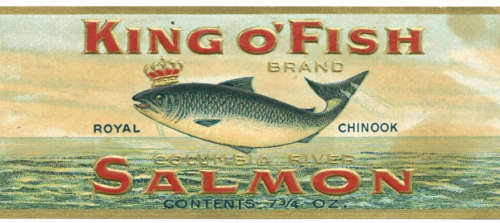
The “June Hogs” were canned as “Royal Chinook,” probably a better marketing name than “June Hog.”
Francis said that the “June Hogs” really deserved the name “royal chinook” for their flesh: rich in oil, fine color, excellent texture and superb flavor. They were a “top shelf” item and Francis noted that the “June Hogs” had no peers in the world’s canned salmon markets.
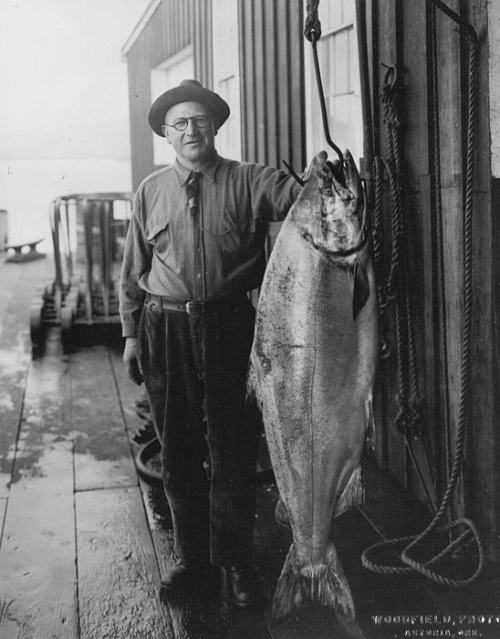
This (above photo) was fisherman Tony Canessa with an 85-pound chinook that he caught at Astoria back in 1925. The picture caption calls it a true “June Hog” and that would agree with Francis Seufert’s description of them: Francis said it wasn’t so much their length that put them in a class by themselves – although they certainly were that, four-foot long fish were said to have been not at all uncommon – but it was instead the depth of their bodies, giving the “June Hogs” a pronounced football-shaped appearance.
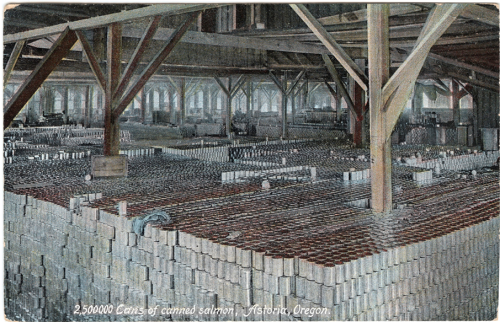
Because of their great flavor and overall quality, the “June Hogs” were a highly-prized and intensely-sought-after fish. This was the way a lot of them ended up, in a can long before they ever got a chance to spawn. This is a picture of two million, five hundred thousand cans of salmon stored in a warehouse at Astoria.
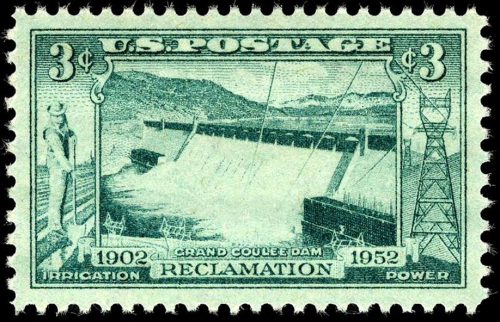
And then, in 1938, construction of Grand Coulee Dam presented a formidable challenge to these fabled fish…
To be continued!
Join us next Wednesday for Part II when we learn how the “June Hogs” and their offspring fared during construction of the dam and the results of early mitigation programs.
Blogger’s note: This is the first part of Dan’s very popular story exploring the lore behind legendary Columbia River Chinook salmon, also known as “June Hogs”. The second and final part of this story can be found here. All photo credits and acknowledgments can be found at the end of part two.
